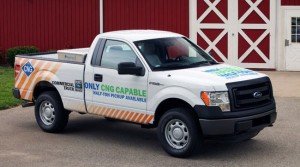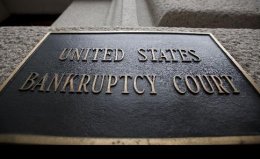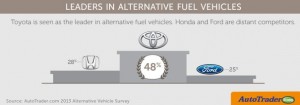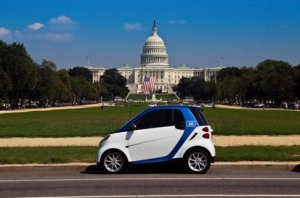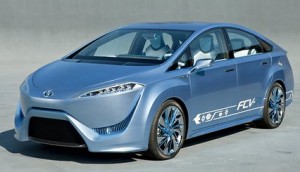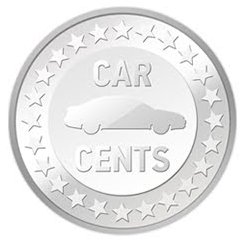 It was a lot of fun to participate in a radio show on Saturday morning that focused on questions consumers are having about green cars. Special thanks to show co-host Jeff Miller of Mark Miller Subaru for inviting my participation on the Utah Car Cents radio show that broadcasts on Saturday mornings in Salt Lake City. The hosts shared a lot of valuable feedback about what dealers are hearing from car shoppers. Here are few of the points I made during the radio show……
It was a lot of fun to participate in a radio show on Saturday morning that focused on questions consumers are having about green cars. Special thanks to show co-host Jeff Miller of Mark Miller Subaru for inviting my participation on the Utah Car Cents radio show that broadcasts on Saturday mornings in Salt Lake City. The hosts shared a lot of valuable feedback about what dealers are hearing from car shoppers. Here are few of the points I made during the radio show……
Hybrids – are popular with a lot of people though they’re only about 2.75% of US new vehicles sales – but the Toyota Prius family makes up over 41% of hybrid sales. Subaru is rolling out its 2014 XV Crosstrek Hybrid AWD crossover SUV that gets 33 mpg highway and 25 city.
Tesla Motors is still waiting for the National Highway Traffic Safety Administration to get clear about its Model S recall after four fires that took place last fall. Tesla has re-stated that NHTSA still gives the 2014 model-year Model S a five-star crash-test rating, and reminds everyone that the car remains far safer than the typical gas-powered vehicles. It sales are doing pretty well too, leading the way in January numbers…….
2013 Plug-In EV US Sales
Chevrolet Volt 23,094
Nissan Leaf 22,610
Tesla Model S 18,650
Toyota Prius Plug In 12,088
Ford C-Max Energi 7,154
Ford Fusion Energi 6,089
January 2014 Plug-in EV US Sales
Tesla Model S 1,300
Nissan Leaf 1,252
Chevrolet Volt 918
Toyota Prius Plug In 803
Ford Fusion Energi 533
Ford C-Max Energi 471
As for this year, the BMW i3 and plug-in hybrid crossover i8 are getting a lot of attention, along with the Cadillac ELR extended range luxury car. Fiat 500E is getting interest and rave reviews. The 2014 Mitsubishi Outlander plug-in hybrid crossover SUV coming out.
The general consensus among experienced EV drivers is that a charging station will cost around $600 to $700. Some installation jobs can cost as little as $200; it can run as much as several thousand dollars if a conduit needs to be run from another part of the house, or if new or upgraded electrical service is required at that home.
Federal tax credits are available for $7,500 on qualifying electric vehicles including the Chevy Volt; other plug-in hybrids usually have less of a credit such as Ford Fusion Energi and C-Max Energi at $4,007. Hybrid and diesel credits expired a few years ago.
It’s very popular to lease electric cars these days rather than buy – and it makes up most of the sales transactions now. You can get a three year lease on the $28,000 Leaf for $199 per month in payments after an $1,800 down payment. Chevrolet is advertising a $299 a month lease for 36 months on a 2014 Volt priced at $34,995. That requires $2,499 as a down payment.
The two most popular compressed natural gas vehicles for consumers are the Honda Civic Natural Gas and a version of the Ford F-150 pickup launched last year. There are other CNG vehicles out there including pickups from GM and Chrysler – Ford is the only half-ton CNG (and propane autogas) pickup out there and more suited for personal driving trips than for work in construction and other industries. The Civic varies in price from $18,190 for the traditional version up to $27,965 for the natural gas version. A federal 50 cent per gallon equivalent credit in refueling natural gas expired at the end of 2013, but it’s still being determined how this will affect CNG prices. So far it doesn’t appear to be changing them, which can be about one third the price of diesel. The range estimate is shorter on the CNG version – maybe 225 miles on the natural gas fill up and about 425 miles on a tank of gasoline in the regular version of the Civic. Though customers will pay about $10,000 more to buy the CNG version of the F-150, they could see a payback on their investment in as little as two to three years because natural gas prices are so much cheaper than gasoline or diesel fuel, according to Ford.
Clean Diesel – 2013 sales
Volkswagen Jetta Diesel 43,983
Volkswagen Passat Diesel 34,963
Volkswagen Golf Diesel 7,558
Mercedes GK Class Diesel 6,200
Porsche Cayenne Diesel 5,386
Mercedes ML Class Diesel 4,886
Top selling US clean diesel model:
Chevrolet Cruze Diesel 2,995
The price is higher than gasoline – about $3.31 regular gasoline and $3.94 for diesel on Wednesday. But the mileage is very strong – usually higher than the comparable gasoline engine vehicles, which offsets the gas pump price differential. The technology is becoming more trustworthy as more Americans are changing perceptions of diesel from large, smelly, and sooty commercial trucks to clean, high performance German passenger cars. Turbo direct injection on the VW and Audi models is helping. The Ultra-Low Sulfur Diesel ruling in the fuel pumps has helped, too.
Hydrogen Fuel Cell Vehicles: That’s been a very popular topic in all types of media in the past few months – consumer, automotive, and business. The Hyundai Tucson Fuel Cell rolled out at the LA Auto Show and is initially being offering in the Los Angeles and Orange County region of Southern California staring this spring for $499 per month on a 36 month lease with $2,999 down. This includes the addition of a remarkable new addition to the Hyundai Assurance program –unlimited free hydrogen refueling. The problem is that there’s only 10 hydrogen fueling station in the US right now, with eight of them in Southern California. Honda has the FCX Clarity fuel cell car in small numbers and will be rolling out its next generation fuel cell car soon. Mercedes has the F-Cell but also on small numbers. Toyota will be rolling out its FCV model fuel cell crossover in the US in 2015. They are amazingly clean – water vapor and zero emissions and you can fuel it up four minutes. But the cost has been high and the volume low; and you have the range anxiety challenge with its lack of refueling stations.


